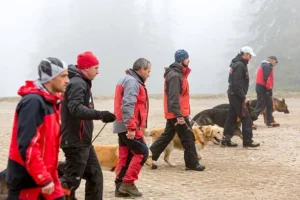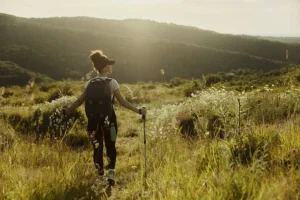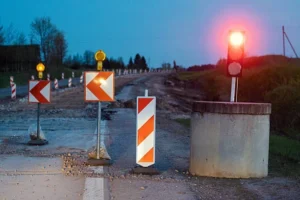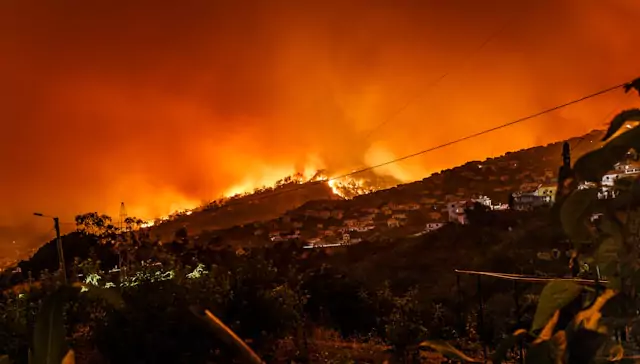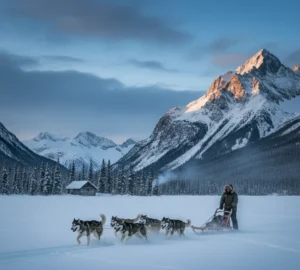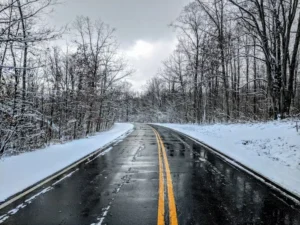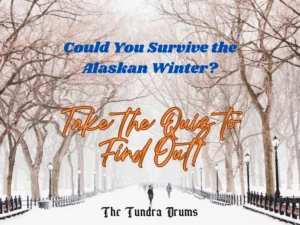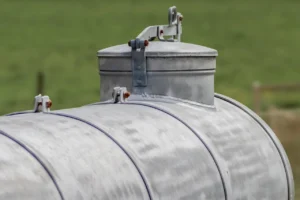Alaska is witnessing a surge in Alaska wildfires and changing forest dynamics due to rising temperatures and extended seasons. Both tundra and boreal forest regions are experiencing larger and more frequent fires, with impacts felt statewide.
To address this, Alaska’s fire management agencies are swiftly adapting, utilizing satellite data and science-based decision-making tools.
This article is about Alaska’s evolving wildfire patterns, focusing on 21st-century shifts while also drawing upon historical contexts. The Alaska Fire Science Consortium is crucial in enhancing understanding of Alaska wildfires and changing forests through science delivery, outreach, and education.
Some Key Points
- Wildfires are a natural process in Alaska, exacerbated by climate change.
- Alaska’s fire environment is vast, complex, and unique.
- Managing wildland fires in Alaska requires advanced planning and cooperation among many agencies.
- Fire management relies on science to effectively plan and implement fire suppression efforts.
What Are Interesting Facts About Wildfires?
Wildfires are a significant natural phenomenon with far-reaching impacts on ecosystems, communities, and the environment. Here are some fascinating facts that shed light on the complexities of wildfires:
- Human-Caused: Nearly 85% of wildfires stem from human activities, like discarded cigarettes and unattended campfires.
- Fire Triangle: For a wildfire to ignite and spread, it requires fuel, oxygen, and heat, forming the fire triangle.
- Wind Influence: Strong winds can carry embers over long distances, igniting new fires and hastening the spread of existing ones.
- Destruction: Wildfires bring immense destruction, causing damage to homes, businesses, infrastructure, and, tragically, loss of life.
- Climate Change: Rising temperatures due to climate change contribute to more frequent and intense wildfires, prolonging fire seasons.
- Economic Impact: Wildfires incur significant financial costs, including emergency response, rehabilitation, and loss of business.
- Air Pollution: Wildfire smoke contains harmful substances, posing health risks to populations far from the fire’s location.
- Wildlife Adaptation: Some plants and animals have evolved strategies to survive and thrive after wildfires.
- Social and Mental Health Effects: Wildfires have profound social and mental health impacts, leading to long-term psychological issues like anxiety and PTSD.
- Ancient Scars: Wildfires have shaped the planet for millennia, leaving charcoal deposits in soil and tree rings as evidence of their historical presence.
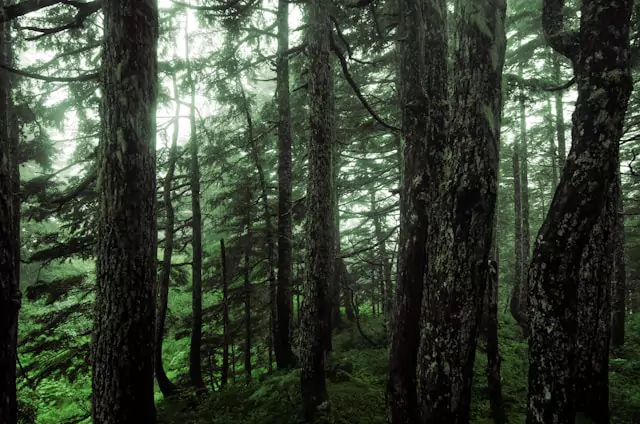
The Unique Environment of Alaska’s Fire Landscape
Alaska’s fire landscape is vast and complex, marked by increasing temperatures and longer seasons. Both tundra and boreal forests witness more frequent, larger fires.
Alaska’s fire agencies use satellite data and science-based strategies to adapt to this situation.
The fire season is divided into four phases, influenced by snowmelt and lightning strikes. The presence of deep duff fuels wildfires, burning underground for extended periods.
As Alaska’s climate warms, managing wildfires requires advanced planning and cooperation among agencies to safeguard the state’s unique environment.
Collaborative Approaches to Wildfire Management
1. Barriers to Collaborative Management:
- Challenges between government agencies and local communities hinder cooperation.
- Differences in values and lack of involvement of all stakeholders.
- Cultural differences affecting partnership with tribal stakeholders.
2. Importance of Inclusive Collaboration:
- Collaboration is vital for addressing wildfire risks effectively.
- Involving diverse stakeholders, as emphasized by policies like the Healthy Forest Restoration Act.
- Collaborative approaches foster community unity and common goals.
3. Challenges in Sustaining Collaboration:
- Changes in agency priorities and processes can affect long-term collaboration.
- People’s willingness to contribute beyond their roles is essential for ongoing collaboration.
- Collaboration often remains at the coordination level, lacking true shared decision-making.
4. Policy Recommendations:
- Prioritize indigenous ecological frameworks and involve tribal stakeholders in wildfire management.
- Incorporate local knowledge into planning efforts.
- Adapt agency policies to foster more equitable, collaborative partnerships.
The Role of Science in Alaska’s Fire Suppression Efforts
Science is crucial to Alaska’s wildfire management due to its vast and complex environment.
The Alaska Fire Science Consortium is pivotal in delivering scientific knowledge, outreach, and education to understand wildfire’s significance. The consortium conveys evolving wildfire patterns by analyzing fire phases and 21st-century trends.
Collaboration between researchers and wildfire managers ensures the application of scientific insights. This collaboration is vital as Alaska’s wildfires are influenced by climate change, earlier snow melt, and other factors.
Remote sensing tools and science-based decisions help respond to intense wildfire seasons. The consortium’s work suppresses fires and preserves ecosystems.
Science informs Alaska’s fire suppression by integrating research, remote sensing, and science-based decisions to tackle evolving wildfire challenges.
How Do Wildfires Affect Forests?
Wildfires can drastically change forests, affecting plants, animals, and the land. Here’s how:
- Vegetation Loss and Changes: Fires can destroy plants, leading to soil erosion and fewer nutrients. This alters animal habitats and can make them more vulnerable to diseases and pests.
- Soil Impact: After a fire, soil loses its ability to hold water, which makes it easier for rain to wash away. This can harm water quality and lead to problems like algae blooms.
- Wildlife Impact: Some animals can’t escape fires and may die. Afterward, they might struggle to find food and shelter, forcing them to move closer to humans.
- Biodiversity and Strength: Controlled fires can help forests by clearing away dead plants and creating new homes for animals. They also make forests stronger and more diverse in the long run.
Overall, while wildfires can be destructive, they also play a natural role in keeping forests healthy and diverse.
Do Wildfires Help Alaskan Forests?
In Alaska’s forests, wildfires bring both good and bad effects:
Positive Impacts:
- Wildfires create different habitats, like meadows and shrublands, boosting biodiversity.
- Some fires clear out dead plants, letting more sunlight in and helping diversity grow.
- As more fires happen in Alaska due to rising temperatures, different trees might grow, which could store more carbon in the long term.
Negative Impacts:
- Fires can destroy plants, cause erosion, and reduce soil nutrients.
- This loss of plants affects new growth and where animals can live, even putting some species at risk.
- Animals can get hurt or killed in fires, especially older or young ones.
- Some fires burn so hot and deep that they damage the soil, making it tough for plants to grow back.
In short, while wildfires can help Alaska’s forests by making them more diverse and storing carbon, they also bring risks like damaging soil and harming wildlife. The impact of wildfires in Alaska is complicated and depends on how often and how strong they are.
Alaska Wildfires and Changing Forest
Alaska’s wildfires are reshaping the forest landscape, changing the types of trees that dominate the area. Instead of evergreen trees, more deciduous trees like aspen and birch are taking over. This shift affects how carbon and nutrients move through the ecosystem and how fires behave. It could also affect the stability of the permafrost and the balance of carbon in the air.
This change in trees isn’t just about what’s growing—it’s also changing the whole ecosystem. It’s affecting the plants and animals that live there. Scientists are still studying how these changes will impact wildlife and plants and how well the ecosystem can bounce back after a fire.
Alaska’s wildfires are big players in shaping the forests. They’re causing a switch in tree types that could affect the environment and climate.
Is Alaska Affected by the Wildfires?
Alaska’s facing big impacts from wildfires, like:
- Changing Trees: Fires are switching up the kinds of trees in Alaska’s forests, from evergreens to ones that lose their leaves, like aspen and birch.
- Big Fires: More and bigger fires are happening, with seasons starting earlier and lasting longer. This puts a strain on the folks trying to manage the fires.
- Hard on Wildlife: Some animals can’t escape the fires, and others lose their homes and food. This changes where they live and how they move around.
- Messing with Nature: Fires can damage the land, wash away soil, and affect water quality.
- Costs and Climate: Dealing with fires costs a lot of money, and they change the amount of carbon in the air, which can affect how warm or cool things get.
Why Does Alaska Have So Many Forest Fires?
Alaska faces a significant challenge with forest fires, and the reasons behind this phenomenon are varied. About half of these fires start from natural causes like lightning strikes, while the remainder are triggered by human activities, whether accidental, intentional, or due to negligence.
Factors such as an increase in flammable vegetation, dry conditions, and early snowmelt, especially on the tundra, exacerbate the state’s susceptibility to wildfires. Additionally, the warming climate, characterized by heat waves, droughts, and longer fire seasons, intensifies the frequency, severity, and duration of wildfires in Alaska.
Collectively, these factors create an environment conducive to the rapid ignition and spread of wildfires across the state, highlighting the complex interplay of natural and human-induced factors in shaping Alaska’s fire landscape.
Conclusion
Alaska wildfires and changing forests underscore the intricate dance between nature and human influence, shaping the state’s landscapes. As wildfires intensify, Alaska’s forests notably transition from evergreen to deciduous dominance, impacting carbon cycling and regional climate dynamics.
Collaborative efforts and science-based strategies are pivotal in mitigating risks and managing ecosystems. Inclusive collaboration with Indigenous communities is crucial for resilience.
Alaska faces challenges and opportunities in wildfire management, necessitating proactive adaptation measures.
By embracing innovation and collective action, Alaska can navigate these complexities and ensure the long-term health of its ecosystems in the face of evolving wildfire dynamics.
FAQs
How Do Wildfires in Alaska Impact the Global Climate?
Wildfires in Alaska release large amounts of carbon dioxide and other greenhouse gases into the atmosphere, contributing to climate change. These fires can release significant quantities of CO2, especially in carbon-rich ecosystems like boreal forests and tundra. Additionally, wildfires can destabilize carbon stores in the soil and permafrost, further exacerbating climate change.
What is the Main Effect Global Warming is Having in Alaska?
The main effect of global warming in Alaska is the increasing frequency, size, and severity of wildfires. Warming temperatures, longer growing seasons, earlier snowmelt, and drier conditions create more favorable conditions for wildfires, leading to significant environmental impacts in the state.
How Can Stop Alaskan Wildfires Slow Climate Change?
Stopping or managing Alaskan wildfires could be an important climate change mitigation strategy. Investing in expanded fire management, such as early detection and rapid response to small fires, could help limit wildfire carbon emissions. Additionally, partnering with neighboring countries like Canada and Russia to manage boreal wildfires across the region could further enhance the climate mitigation potential of fire management.
What Was the Biggest Wildfire in Alaska?
The biggest wildfire in Alaska’s history is the 2004 Taylor Complex Fire, which burned approximately 1.3 million acres of land.
Is Alaska Colder Than Canada?
Alaska’s climate varies widely across the state, but it generally experiences colder temperatures than most parts of Canada. However, some regions in Canada, particularly in the northern territories, can experience similar or even more frigid temperatures than parts of Alaska during certain times of the year.

